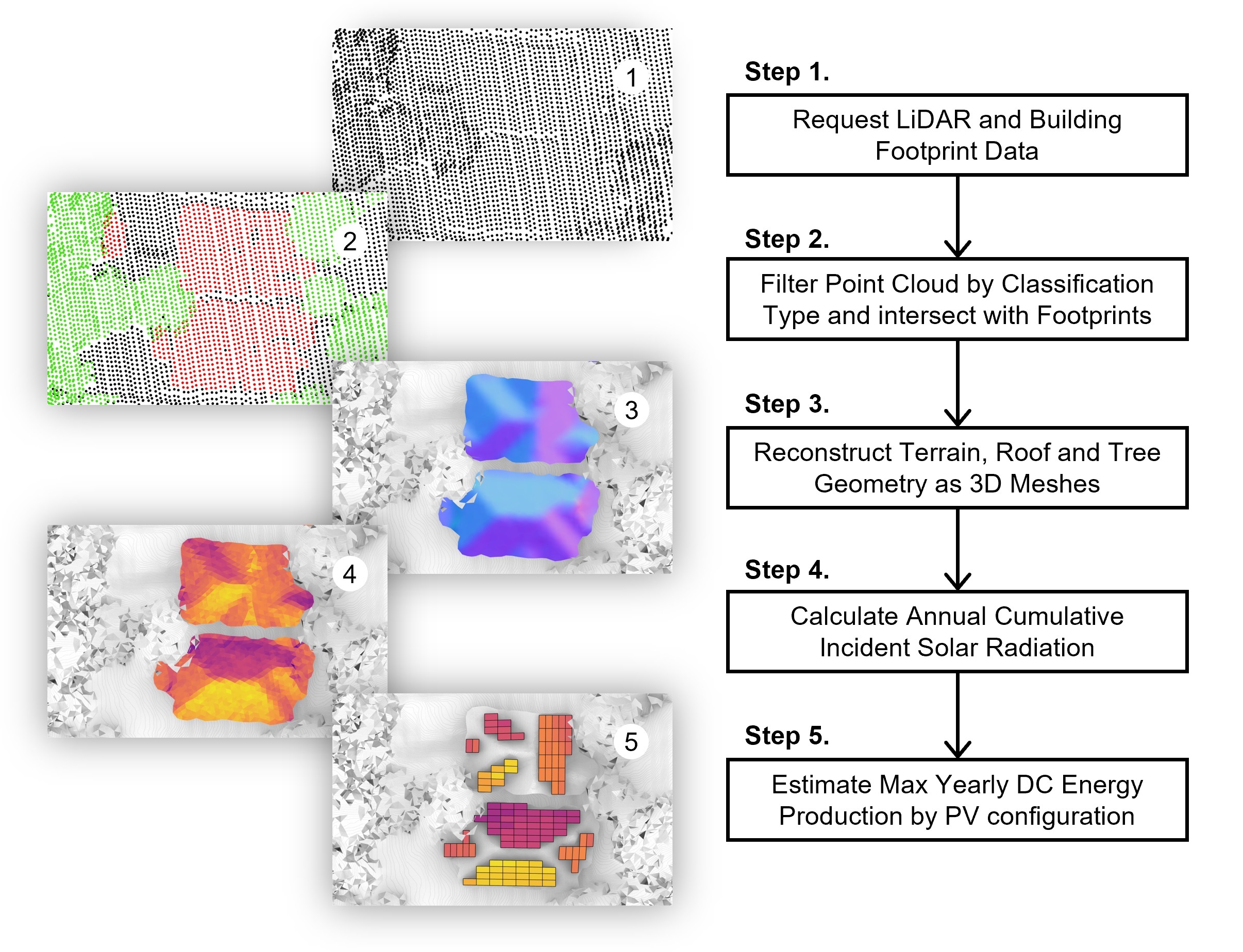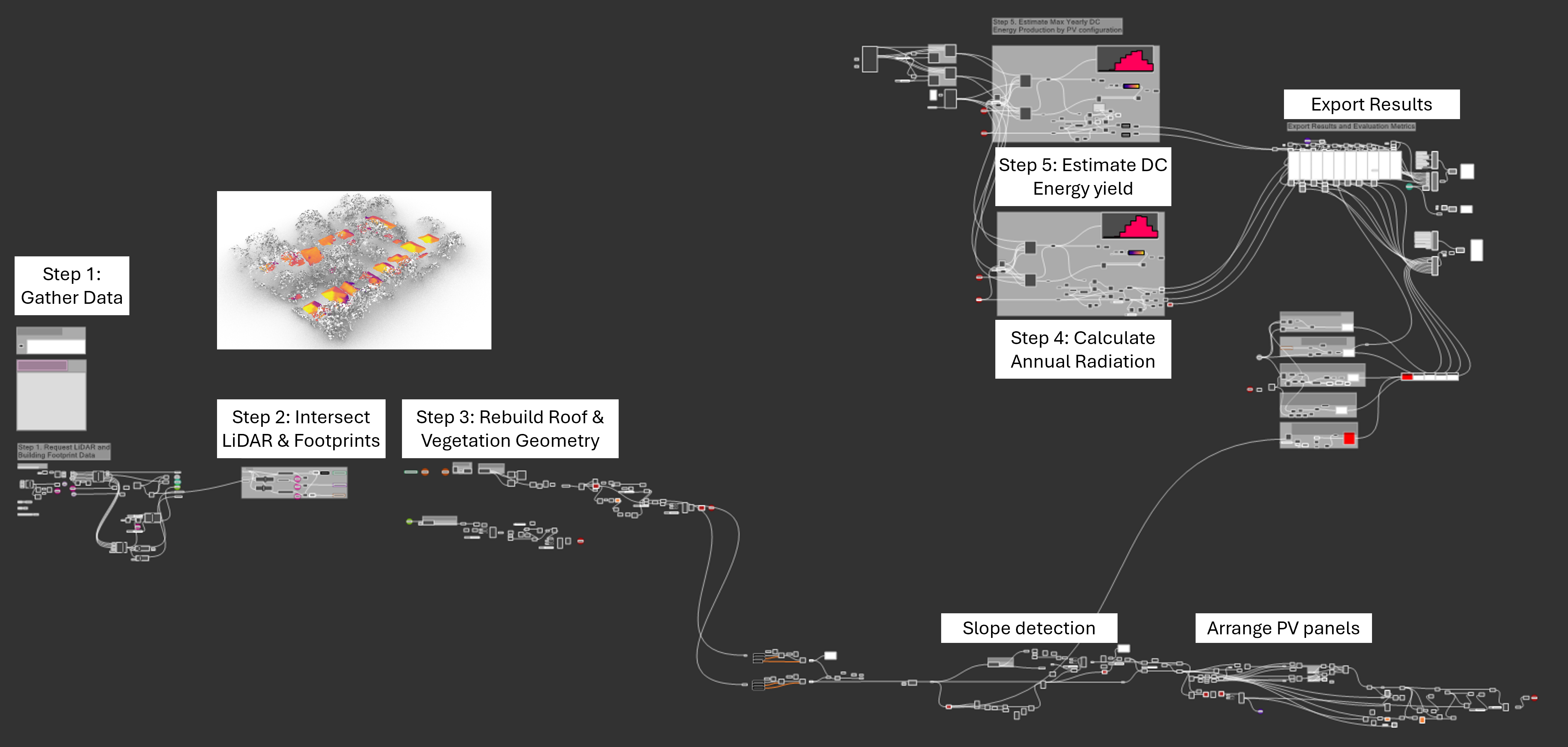A Computational Framework for Assessing Solar Photovoltaic Potential of Buildings Based on LiDAR and Building Footprint Data
The mass adoption of building-integrated photovoltaics (BIPV) emerges as a promising solution for reducing global greenhouse gas (GHG) emissions. However, using such systems to achieve net zero operational energy at the urban scale requires evaluating the solar potential of thousands of buildings which poses many challenges concerning data availability, quality, and privacy. To address these issues, we present an automated end-to-end framework for querying, combining, and processing publicly available aerial Light Detection and Ranging (LiDAR) and Building Footprint data. Using open-source algorithms for geometry reconstruction and solar radiation analysis, we show how to estimate the maximum annual direct current (DC) electricity yield per building. This framework is designed to enable urban planners, developers, and architects to assess the solar potential of neighborhoods and cities in an accessible way. By enabling effective communication of results, it can help optimize resource allocation and benefit solar adoption initiatives.
BIPV, Performance-based design, Photovoltaic potential, Spatial data processing, Renewable energy, Urban planning
- Name: Silvia Vangelova
- LinkedIn: Link
- Institution: Georgia Institute of Technology
- Program: M.S. Analytics (OMSA)
- Advisor: Dr. Patrick Kastner
Code/: Directory containing the code, scripts, or notebooks used in the research.Grasshopper/: Directory containing the grasshopper definitiondata/: Directory containing data for the grasshoper script
Notebooks/: Directory containing notebooksimages/: Directory containing images produces from running the Notebooksdata/: Directory for storing data produced from running the Notebooks
Resources/: Directory containing images used in this README.md file.README.md: This file, providing an overview of the thesis and repository.
Environment set-up:
- python -m venv env
- env\Scripts\activate
- pip install -r requirements.txt
The grasshopper definition is developed in Rhino 8 SR10 (8.10.24228.13001, 2024-08-15) on Windows. For this version, there are certain issues when importing pandas (see forum discussion here)
-
Before starting Grasshopper make, sure to open the ScriptEditor and run the following script to import numpy, pandas, and laspy:
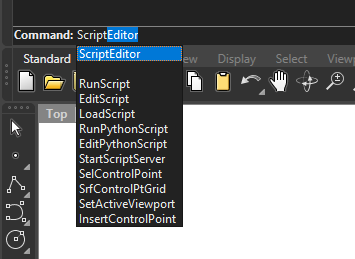
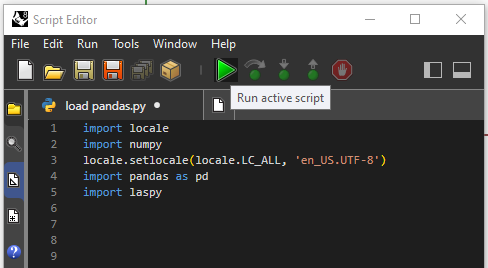
Code snippet:
import locale import numpy locale.setlocale(locale.LC_ALL, 'en_US.UTF-8') import pandas as pd import laspy
-
To install Python packages in Rhino 8 you can either install them from the Terminal or use the
# r: %package name%notationUsing Terminal
- Open command prompt
- Navigate to script environment, e.g. run:
cd "C:\Users\%UserName%\.rhinocode\py39-rh8\Scripts" - Instal packages, e.g. run
pip install pandas
Using the
# r: %package name%notation: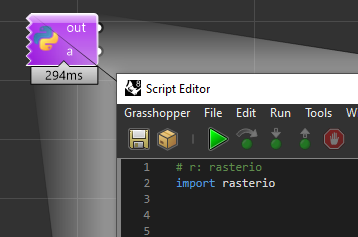
See also this tutorial for using packages in Rhino 8
-
To run the script make sure the following packages are installed and can be imported properly:
rasterio laspy lazrs laszip geopy scikit-learn scipy cgal requests rasterio geopandas osmnx
@inproceedings{vangelova2024sigradi,
title = {A Computational Framework for Assessing Solar Photovoltaic Potential of Buildings Based on LiDAR and Building Footprint Data},
author = {Vangelova, Silvia and Kastner, Patrick},
year = {2024},
booktitle = {Proceedings of SIGRADI 2024},
institution = {Georgia Institute of Technology},
bibtex_show = {true},
preview = {SIGRADI2024.png},
isbn = 978-9915-9635-2-5
}